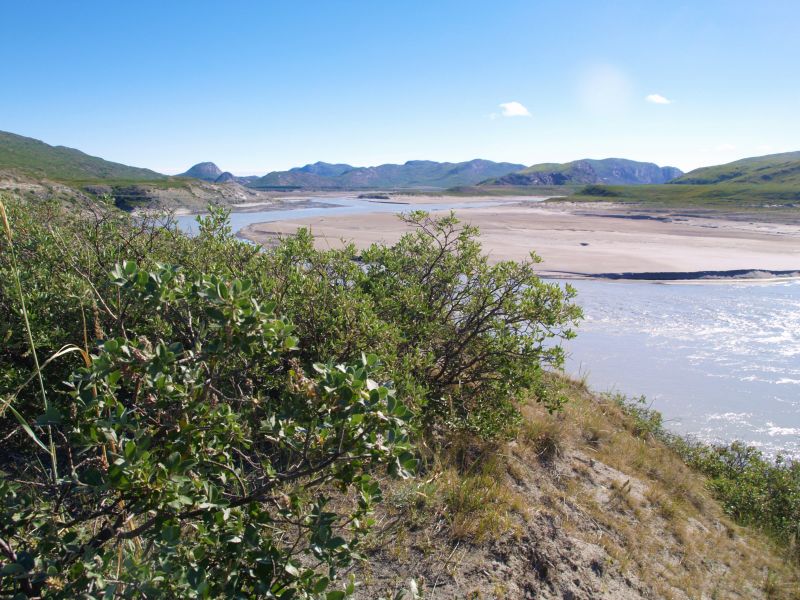An international team of scientists from eight countries, led by Dr. Agata Buchwał and with the participation of prof. Grzegorz Rachlewicz from the Faculty of Geographical and Geological Sciences of the Adam Mickiewicz University (AMU), examined the relationship between the growth of rings of Arctic shrubs and declining sea ice extent, air temperature and precipitation in the Arctic. Researchers have shown that the declining extent of sea ice promotes the growth of tundra shrubs in some regions of the Arctic, and reduces their growth in other, drier regions. The team has made an effort to unravel the mystery, which is why this divergent shrub growth pattern occurs. The results were published in the Proceedings of the National Academy of Sciences of the United States of America [https://www.pnas.org/content/early/2020/12/09/2013311117].
Arctic sea ice has been declining rapidly over the past two decades. During this time, tundra vegetation - the northernmost plant formation on Earth - can be observed in many regions of the Arctic. The seemingly treeless tundra is largely overgrown with dwarf trees, called tundra shrubs. Arctic shrubs, like trees in lower latitudes, form annual growth rings. These tiny rings can be measured under a microscope to learn about the history of climate, but also the responses of shrub growth to current climate changes that are present in the Arctic. Dr. Agata Buchwał's research shows how the ongoing sea ice decline affects the growth of Arctic shrubs.
Dr. Agata Buchwał began her research during a Fulbright fellowship at the University of Alaska Anchorage in 2015. Scientists assembled 23 chronologies of annual rings of shrubs. The dataset included dwarf birches and willows from Alaska, the Canadian Arctic, Greenland, Spitsbergen and Siberia. Studies have shown that while most shrubs take advantage of the warming caused by the declining sea ice extent and increase their growth, there is an unique group of shrubs that show decrease in growth. What drives these divergent responses of shrubs to declining sea ice? The researchers showed that regional changes in sea ice extent are strongly linked to changes in local temperature and, more importantly, to a decrease moisture availability in selected regions of the Arctic. In particular, the areas with shrubs, which show growth decline in the recent period, were characterized by an increasing moisture deficiency with a simultaneous increase in air temperature.
Why is the growth of tundra shrubs important? As the scientists explain, the tundra shrubs, like the trees in lower latitudes, are an important regulator of the carbon cycle. While areas of the tundra with increased shrub growth can sequestrate more carbon from the atmosphere, areas with declined shrub growth are potential carbon source. In particular, attention should be paid to the interaction between the tundra cover and permafrost, which is a source of greenhouse gases during thawing. Research conducted by AMU scientists shows that some places in the Arctic are getting so dry that plant growth at high temperatures is hindered. Dry tundra can thus be more susceptible to, for example, the risk of wildfires. It is worth noting that AMU has been conducting research in the Arctic for over 40 years, e.g. using the UAM Petuniabukta Polar Station on Spitsbergen.
Buchwal A., Sullivan P. F., Macias-Fauria M., Post E., Myers-Smith I., Stroeve J. C., Blok D., Tape K. D., Forbes B. C., Ropars P., Lévesque E., Elberling B., Angers-Blondin S., Boyle J. S., Boudreau S., Boulanger-Lapointe N., Gamm C., Hallinger M., Rachlewicz G., Young A., Zetterberg P., Welker J. M. (2020) Divergence of Arctic shrub growth associated with sea ice decline. Proceedings of the National Academy of Sciences, 117 (52), 33334-33344; doi: 10.1073/pnas.2013311117


